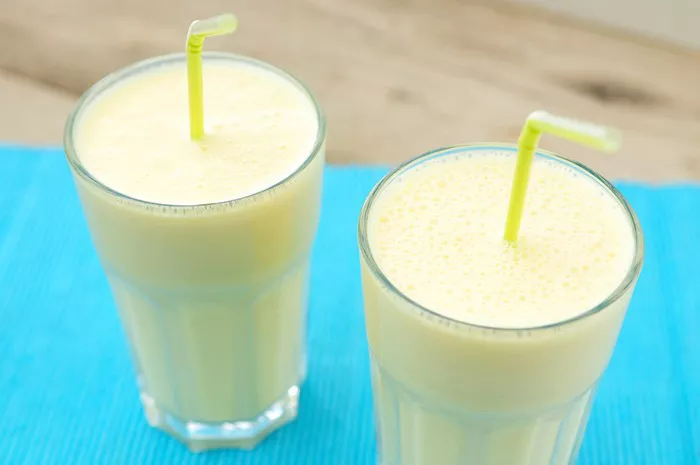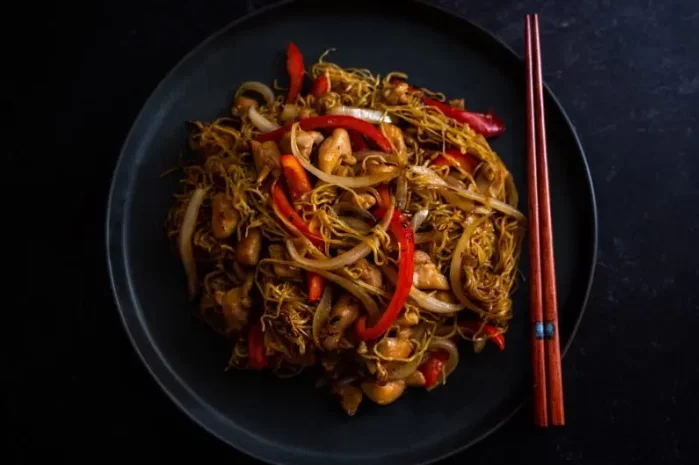Dried chow mein noodles are a popular ingredient in many Asian dishes. Whether you’re making a stir-fry, a soup, or a noodle-based casserole, knowing how to cook these noodles properly is key to achieving the perfect texture. In this article, we’ll cover everything you need to know about cooking dried chow mein noodles, from preparation to cooking methods, tips, and troubleshooting.
What Are Chow Mein Noodles?
Chow mein noodles are thin wheat-based noodles used in Chinese cooking. The name “chow mein” translates to “stir-fried noodles,” but these noodles can also be boiled and used in soups or other dishes. While fresh chow mein noodles are available, dried versions are more commonly found in grocery stores due to their longer shelf life and convenience.
Dried chow mein noodles need to be rehydrated before cooking. The rehydration process depends on the specific recipe you’re following, but the basic principle is the same: You need to soak or boil the noodles to make them soft and pliable.
Choosing the Right Dried Chow Mein Noodles
Not all dried noodles are the same, and it’s important to select the right kind of chow mein noodles for your dish. There are different types, and the cooking method might slightly vary based on the thickness and texture of the noodles. When choosing dried chow mein noodles:
Look for the right texture: Some dried chow mein noodles are thin, while others are thicker. The thin noodles cook faster, while the thicker ones might take a bit more time to soften.
Check the label: Make sure the noodles are labeled as chow mein or stir-fry noodles. Avoid instant noodles, as they may be pre-cooked and designed for a different kind of preparation.
Steps to Cook Dried Chow Mein Noodles
Cooking dried chow mein noodles requires some basic steps. Below is a detailed breakdown of the process:
Step 1: Boil Water
Start by bringing a large pot of water to a boil. The amount of water depends on how many noodles you plan to cook, but a good rule of thumb is to use about 4-5 cups of water for every 100 grams (about 3.5 ounces) of dried noodles.
It’s important to use enough water to allow the noodles to move around freely as they cook. This prevents the noodles from sticking together and ensures that they cook evenly.
Step 2: Add the Noodles
Once the water is boiling, add the dried chow mein noodles. Gently stir the noodles to separate them and prevent them from sticking together. Be sure not to break the noodles; they should cook whole, even if they are a bit tangled when added.
If you are cooking a small amount of noodles, you can simply break the bundle into smaller sections to make it easier to manage.
Step 3: Cook the Noodles
Let the noodles cook in the boiling water for about 3-5 minutes. Keep an eye on them, as cooking times can vary depending on the thickness of the noodles. Thin chow mein noodles will usually cook faster, while thicker ones may take a little longer.
To check if the noodles are ready, taste one. The noodles should be soft but still slightly firm to the bite (al dente). If they are too hard, continue cooking for another minute or two, then check again.
Step 4: Drain the Noodles
Once the noodles are cooked, drain them using a colander. Be sure to drain off all the water to prevent the noodles from becoming soggy.
If you’re preparing the noodles for stir-fry or another dish, it’s best to rinse the noodles under cold water after draining. This helps remove any excess starch and prevents the noodles from clumping together as they cool.
Step 5: Use or Toss with Oil
Once drained, you can use the noodles right away or toss them in a little oil to prevent them from sticking. If you’re preparing a stir-fry, you can add a small amount of vegetable oil or sesame oil to the noodles and mix them gently. This will keep the noodles separate and make them easier to stir-fry.
If you plan to store the noodles for later use, refrigerate them in an airtight container. Toss them with a bit of oil to keep them from sticking together.
Cooking Dried Chow Mein Noodles for Stir-Fry
Stir-frying is one of the most popular ways to prepare chow mein noodles. Here’s a simple guide on how to incorporate cooked noodles into a stir-fry:
Step 1: Stir-Fry Vegetables and Meat
Before adding the noodles, cook your vegetables and protein (such as chicken, beef, shrimp, or tofu) in a hot wok or large pan with a bit of oil. Stir-fry these ingredients until they are cooked through and tender.
Step 2: Add the Noodles
Once the vegetables and meat are ready, add the cooked noodles to the pan. Gently toss the noodles with the other ingredients to combine.
Step 3: Add Sauces and Seasonings
Chow mein noodles are typically seasoned with a soy-based sauce. You can add soy sauce, oyster sauce, hoisin sauce, or a combination of these for flavor. Be sure to add a bit of sugar or salt to balance the flavors.
If you like spicy noodles, you can add chili paste or fresh chilies. Add your seasonings and sauces according to taste and toss everything together until the noodles are coated in the sauce.
Step 4: Stir-Fry Until Crispy (Optional)
For crispy chow mein, continue to stir-fry the noodles on medium-high heat until they begin to crisp up around the edges. This will give them a nice texture and a bit of crunch.
Step 5: Serve and Enjoy
Once everything is well-mixed and heated through, remove the stir-fry from the pan. Serve your chow mein hot with your favorite garnishes such as sesame seeds, green onions, or cilantro.
Cooking Dried Chow Mein Noodles for Soup
Dried chow mein noodles are also great for soups. Here’s how to incorporate them into a broth-based dish:
Step 1: Boil the Noodles
Follow the same steps as above for boiling the noodles. You can either cook the noodles in the soup broth itself or boil them separately and add them later. Cooking the noodles directly in the broth will allow them to absorb some of the flavors.
Step 2: Prepare the Soup Broth
While the noodles are cooking, prepare your soup base. This can be a simple chicken or vegetable broth, or you can make a more complex broth by adding herbs, spices, and other seasonings.
Step 3: Add the Noodles to the Soup
Once the noodles are cooked and the soup broth is ready, add the noodles to the soup. Let the noodles cook in the broth for about 2-3 minutes, or until they are tender and have absorbed some of the flavors from the broth.
Step 4: Serve the Soup
Once the noodles are ready, serve the soup hot. You can garnish the soup with green onions, cilantro, or chili flakes for added flavor.
Tips for Cooking Dried Chow Mein Noodles
Do not overcook the noodles: Chow mein noodles cook quickly, and overcooking them can result in a mushy texture. Be sure to test them for doneness a minute before the recommended time is up.
Rinse after boiling: Rinsing the noodles after boiling removes excess starch, which can make them sticky. This is particularly important if you’re not using them right away.
Use enough water: Dried noodles need plenty of water to cook evenly. If you don’t use enough water, the noodles will stick together and won’t cook properly.
Toss with oil: If you’re not using the noodles immediately, tossing them with a bit of oil will keep them from clumping.
Customize with sauces: Chow mein noodles pair well with a variety of sauces. Don’t be afraid to get creative with your seasonings and flavors.
Troubleshooting Common Problems
Noodles are too sticky: This happens if they weren’t rinsed after boiling or if they were overcooked. To fix this, rinse the noodles under cold water and toss them with a little oil.
Noodles are too hard: If your noodles aren’t soft after boiling, they may need more time to cook. Return them to the boiling water for another minute or two and check again.
Noodles are soggy: This is usually the result of overcooking. If this happens, try to rescue them by stir-frying them in a hot pan to crisp up the edges.
Conclusion
Cooking dried chow mein noodles is simple once you understand the basics. Whether you’re making a stir-fry or a noodle soup, following these steps will help you achieve perfect noodles every time. With just a few ingredients and some basic techniques, you can enjoy a delicious and satisfying meal with chow mein noodles at the center of the dish.
Related topics:

























